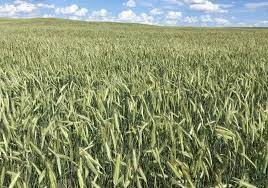The Highs and Lows of Feeding Rye Cereal
5 October 2022Land area used to grow rye crops has increased due to the growing popularity of anaerobic digesters. As a result, we are a beginning to see an increasing number of farmers questioning rye cereal as an alternative to barley or wheat in ruminant rations. But how viable is rye as a starchy carbohydrate source and what are the benefits and constraints of inclusion and growing rye on farm for livestock feed?
Highs
Grain Yield – typically yields around 6-9.4t/ha.
Straw Yield – Rye also typically has very high yields of straw (generally +5 additional 4×4 bales/ha compared to wheat).
Nutritional Content – Rye cereal has a nutritional value similar to barley with energy levels at 13.1 MJ/kg ME but is usually lower in protein, with crude protein levels varying between 8-10% DM.
Please refer to the below table for the nutritional value of rye compared to barley and wheat.
| Cereal | Rye | Barley | Wheat |
|---|---|---|---|
| DM (%) | 86 | 86 | 86 |
| ME (MJ/kg DM) | 13.1 | 13.2 | 13.6 |
| CP (% DM) | 10.0 | 11.5 | 11.5 |
| NDF (% DM) | 13.9 | 15.4 | 9.2 |
| Starch (% DM) | 62 | 56.7 | 72.5 |
| Fermentability | Very High | High | Very High |
Lows
Mycotoxins – Rye is particularly susceptible to ergot which can lead to toxicity issues, particularly in cattle if the ration contains more than 0.1% of ergot bodies.
Palatability – Rye tends to be less palatable compared to other cereals due to its high fibre content and tendency to shatter when processed. For this reason, it is most often mixed with other cereals and forage in a ration to increase palatability.
Rapidly Fermentable – Rye acts like wheat within in the rumen due to its high content of rapidly degradable starch making it an increased risk to acidosis if fed at high levels.
With potentially high yields, a good nutritional profile and high energy level, it is easy to see why rye cereal is an attractive feed option for many farmers. However, due to some restrictions such as palatability and the potential risk of acidosis associated with feeding rye it is recommend that rye is included in the ration at no more that 40% of total cereal content. The crop must also be checked thoroughly for ergot before feeding to ensure there are no risks to animal health associated with ergot toxicity.
Lorna Shaw – Ruminant Nutritionist
External Materials:
https://ahdb.org.uk/knowledge-library/feeding-cereal-grains-to-livestock-winter-rye
Sign up to the FAS newsletter
Receive updates on news, events and publications from Scotland’s Farm Advisory Service

